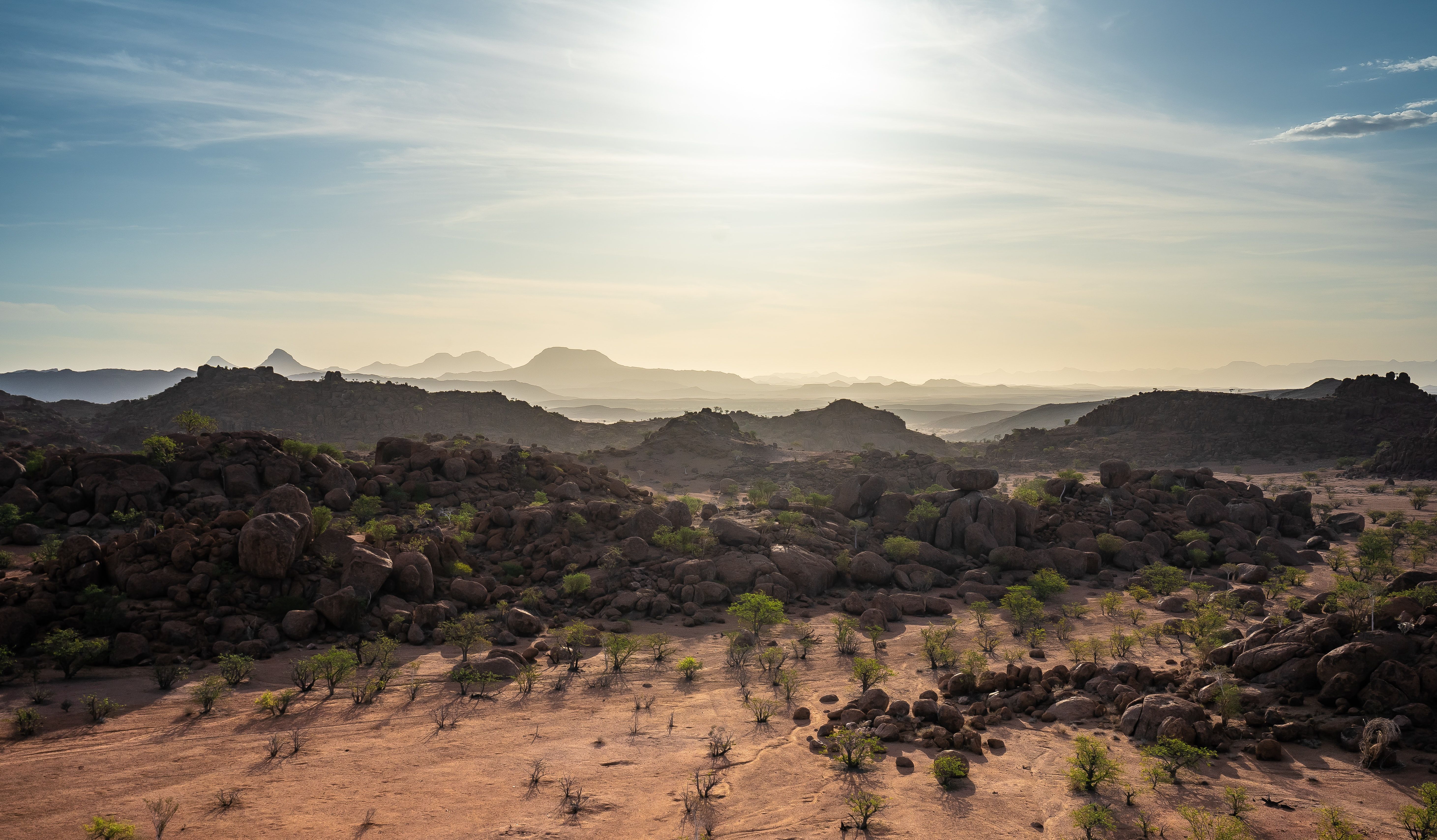Namibia safari.
Prices above are for all inclusive solo traveller, for group tours prices & tours with exclusives check on our fliers/Google business profile posts Or contact Us.
Quality with the best price guarantee and safety measures.
Mid-luxury private/solo guided tour.
More community visits and cultural experiences than game parks
No long-distance driving of more than 6hrs per day.
A 40% deposit is required to confirm your booking.
Great deal for sole travelers, professionals, families, couples, and honeymooners.
Inclusive that defines the quality of our mid-luxury tours.
Airport picks up.
Transport: 4x4 Vehicle
Accommodation: Mid-luxury hotels
Meals: breakfast and lunch.
Professional English guide-driver
Park fees.
7% discount for B2B Tour company group(s).
4% discount for the individual group (s)
Note.
You can customize the number of days and sites/activities (Tell us what is most important to you) according to your available time and budget.
Itinerary overview :
DAY 0: Namibia international airport-Windhoek Namibia. (45km drive).
Activities: Arrivals at Namibia international airport, meet the guide, then transfer to hotel.
Accommodation: Hilton hotel Or Chameleon backpacker’s hotel check-in at Windhoek.
Windhoek is the capital of Namibia, in the country’s central highlands.
It has two traditional names Otjomuise and /Ae//Gams. Windhoek's name may be derived from the word “winter hook” the name of the mountains surrounding Tulbagh in South Africa.
Windhoek was formally established on 18 October 1890. Windhoek has one of the oldest weather bureaus in the world, established in 1863, it has been in uninterrupted use ever since.
DAY 1-2: Windhoek- Sossusvlei(5 hors drive).
Activities: Hiking on dune 45 or big daddy and visit Sesriem- Canyons
Accommodation: Elegant Desert lodge Or Namib desert campsite.
Sossusvlei's translation comes from two languages, the Nama and Africana’s, “susses” means dead-end in the Nama language, and “vlei” means shallow lake or marsh Africana language. Therefore Sossusvlei means Dead end marsh depending on the Nama and Africana occupants.
Set within the coastal desert of Namibia, are the biggest sand dunes, they attract a vast number of travelers each year, many of whom aim to climb up the sands and enjoy a thrilling slide back down.
Sesriem canyon. The canyon's birth dates back between two and four million years when continental upheaval resulted in the creation of most of the westward flowing rivers in the Namib Desert region.
DAY 3: Sossusvlei-Swakopmund(4hours 40 minutes).
Activities: Flamingos watching, Quad biking, Beaches, and nightlife. Walvis Bay&Swakopmund - Namibia.
Accommodation: Protea hotel Or Blue wales hotel.
Drive to Walvis Bay, a port town on the coast of Namibia sheltered by the Pelican Point sand spit, its tidal lagoon is a home for abundant birdlife including flamingos. It’s the largest commercial port in Namibia. At Walvis Bay, there are a lot of tourist activities like kayaking and luxury cruises on the Atlantic Ocean, and sand beach games.
Then Quad biked at Swakopmund. Swakopmund is a beach resort and an example of German colonial architecture.
DAY 4-5: Swakopmund-Damaraland atTwyfelfontein(359km,6hours 40 minutes).
Activities: Visit Damara living museum, Bushmen rock carvings, and engravings.
Accommodation: Twyfelfontein country lodge.
Damaraland is 200km away from the skeleton coast unique for Twyfelfontein contains approximately 2000 rock carvings and wildlife spotting opportunities where a number of desert-adapted animals can be found including elephants and black rhinos, and giraffes.
Twyfelfontein is an important archaeological site and UNESCO World Heritage site that contains some of the finest examples of Bushmen paintings and rock engravings in southern Africa that date back some 10-20,000 years and this makes it one of the most visited sites in the region.
DAY 6: Damaraland- Opuwo(289.3km,6hous 40 minutes).
Activities: Visit The Himba homestead/ Himba villages
Accommodation: OmarungaEpupa- falls camp Or Opuwo country lodge.
DAY 7: Opuwo.- Etosha National park(328 km drive).
Activities: Etosha game drive.
Accommodation: Okaukuejo rest camp.
Etosha National Park is a national park in northern Namibia. It was proclaimed a game reserve in march 1907 in ordinance 88 by the governor of German southwest Africa Dr. Friedrich von Lindequist. It’s about 8600 square miles of the park. The park is named after Etosha pan, about 1840 square miles of the salt pan.
Etosha national park boasts numerous waterholes, including both natural and man-made boreholes, some of the camps in the park offer a unique experience of floodlit waterholes for night–time viewing. Overall these various waterholes tend to offer the park the best opportunities for both big and small game sightings, especially during dry winter months, when more animals are drawn out of hiding to drink at the water's edge.
.
DAY 8: Etosha National park.- Tsumkwe (584km drive 5hours 20 minutes).
Activities: The San (Bushmen) culture experience-fun and entertainment.
Accommodation: Hilton hotel Or Chameleon backpacker’s hotel.
Tsumkwe is the big center of NyaeNyae conservancy the preserve which is home to around 2,500 San with its roughly 500 inhabitants in northeast Namibia, near the border with Botswana.
At Tsumkwe is where you can find a living museum for the San people, where you can find the interesting San men, women, and kids to take you through their living lifestyle, hunting skills, folk songs and cultural dances, their myths and norms.
The San (Bushmen) are believed to be the oldest indigenous inhabitants. For thousands of years they have lived in harmony with nature, but now must find their place in the modern world. The nomadic San people, the original inhabitants of Namibia, were once the sole occupants of much of Southern Africa. They represent one of the few remaining indigenous populations on the continent.
Drive back to Windhoek.
End of the trip.





